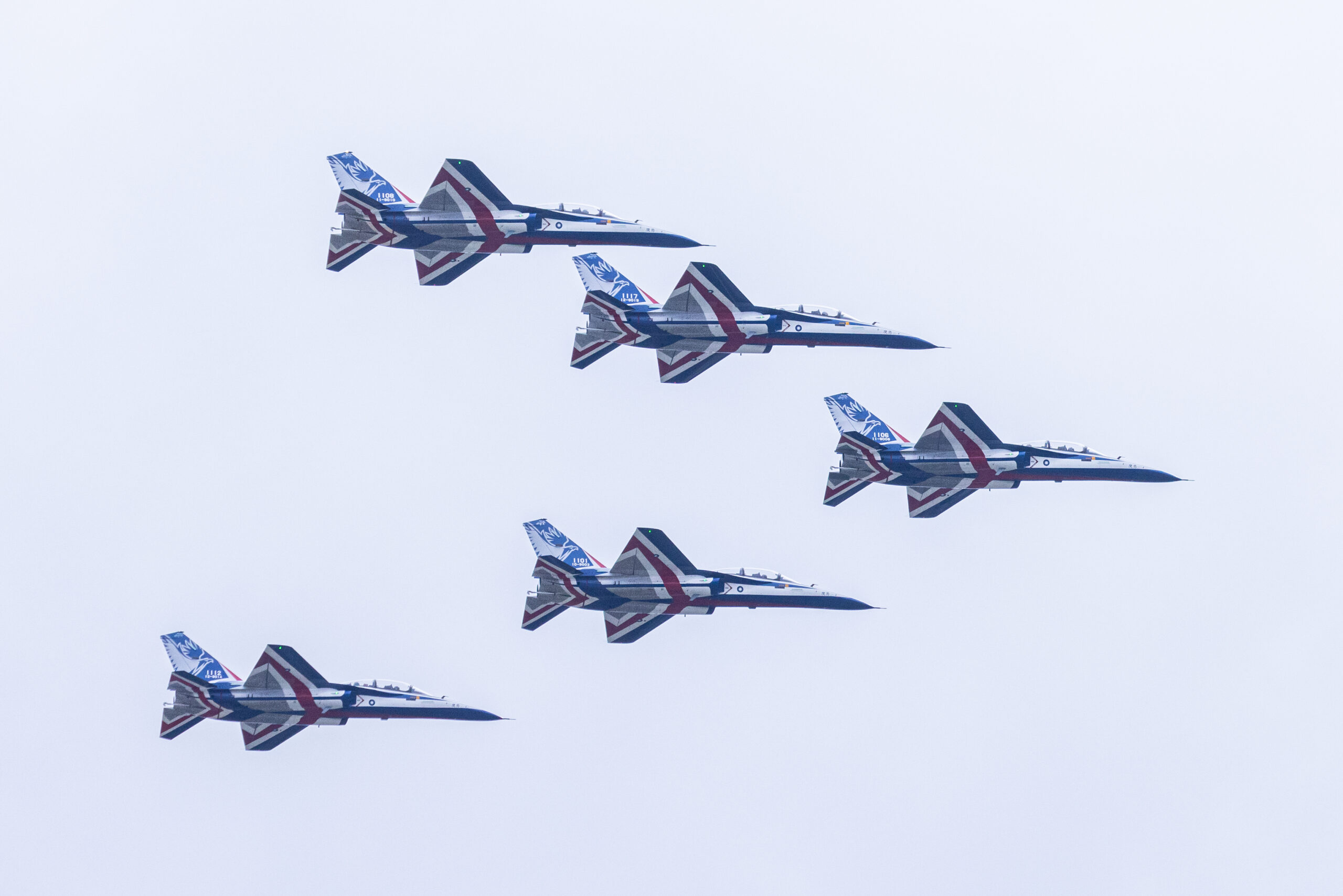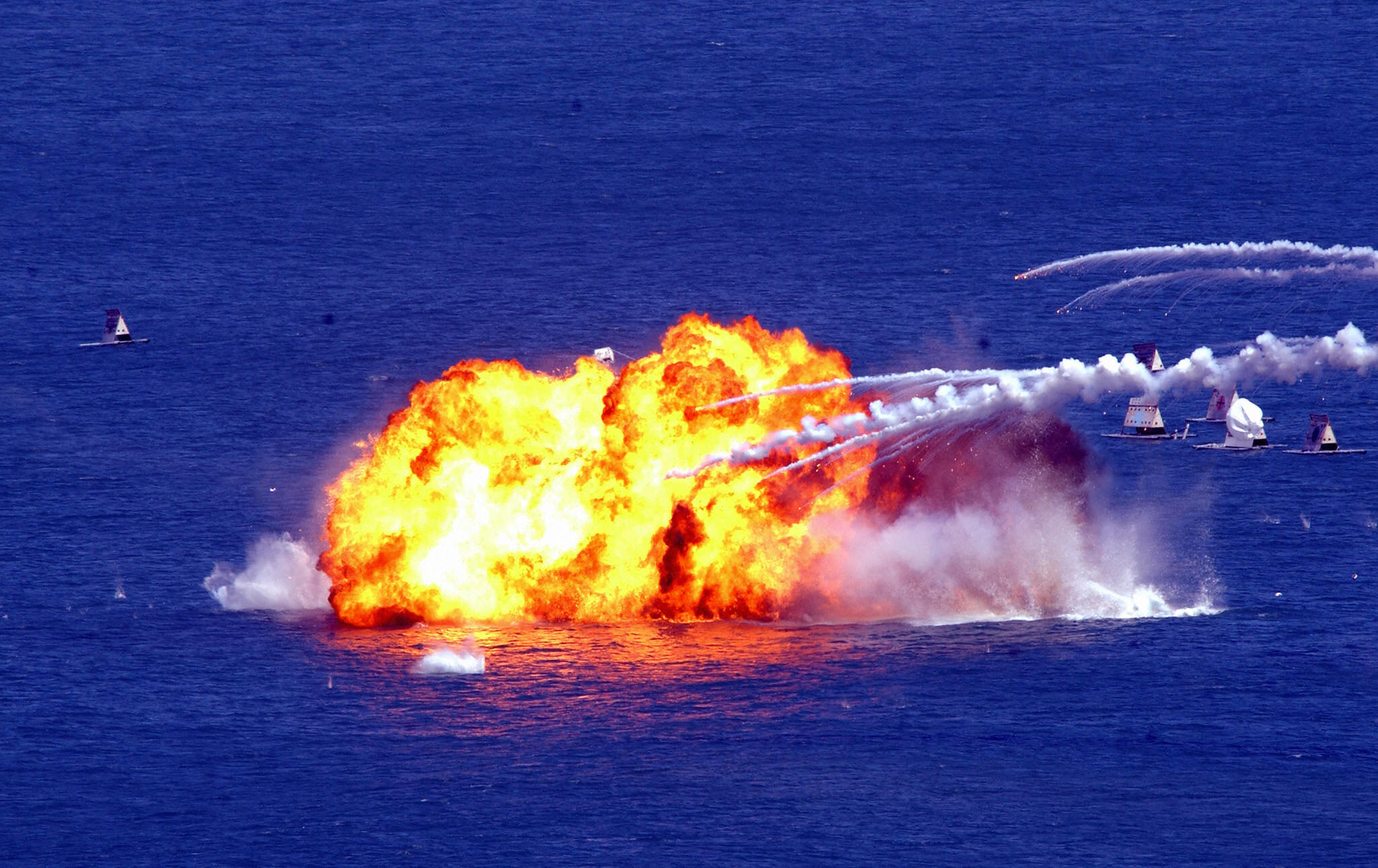Another classic Cold War-era fighter is fast approaching its retirement, this time in Taiwan, which is preparing to bid farewell to its F-5E/F Tiger II jets. Taiwan has operated the type for nearly half a century. While the veteran F-5E/F fighters will stand down from operational use by the end of this year, the unique RF-5E Tigergazer reconnaissance aircraft will remain in use.

According to a report from Taiwan News, an unnamed military official has confirmed that the country’s F-5E/Fs will be retired “by the end of this year.” However, the RF-5s will be retained until they are replaced by MQ-9B Sea Guardian drones, as well as upgraded F-16s carrying MS-110 long-range oblique photography (LOROP) reconnaissance pods. Both the drones and pods are currently on order, but yet to be received.
Retirement of the F-5E/F fleet is being enabled by the progressive introduction of the domestically produced T-5 Brave Eagle advanced jet trainer. Derived from the F-CK-1 Indigenous Defense Fighter (IDF), the new aircraft is replacing both the aging AT-3 jet trainer as well as the F-5E/F, which now serves primarily as a lead-in fighter trainer (LIFT), following the end of its fighter career.

The first prototype of the T-5 conducted its maiden flight in June 2020, and 66 production aircraft are now in the process of delivery to the Republic of China Air Force (ROCAF). Development and production have been handled locally, by the Aerospace Industrial Development Corporation (AIDC).
The introduction of the T-5 is bringing about an overhaul of the ROCAF syllabus, with the previous model involving three aircraft (the propeller-driven T-34C, AT-3, and F-5) giving way to the T-34C and T-5 only.

The end of F-5E/F operations marks a significant milestone in the history of the ROCAF, which has long been an enthusiastic operator of the F-5 family, receiving more than 500 examples in several different versions.
To start with, the ROCAF flew the first-generation F-5A/B Freedom Fighter, with the United States agreeing to provide these aircraft in 1965, to replace the F-86 Sabre, under the Military Assistance Program (MAP). These fighters had a colorful career, some of them being transferred to South Vietnam for use during the Vietnam War, at the request of the U.S. government. Subsequently, surplus Taiwanese F-5A/Bs were also provided to Thailand, Turkey, and the Philippines.

Once the F-5E/F arrived in Taiwan, surviving F-5A/Bs were used for advanced training, until finally retired in 1996. Others were converted as QF-5 Full-Scale Aerial Targets and destroyed during Taiwan-related missile tests in the United States.
Also used for training was a fleet of T-38A Talons, Taiwan becoming one of the few export operators of this aircraft, which remains the standard advanced jet trainer of the U.S. Air Force. The ROCAF’s T-38s were leased from the U.S. Air Force in two separate periods, in the 1970s and again in the 1990s.

Most of Taiwan’s F-5E/Fs were locally assembled by AIDC, under a 1973 agreement, while others came from the United States to compensate for the transfer of ROCAF F-5As to South Vietnam. The first F-5E for the ROCAF was delivered in December 1974 and local manufacture continued, for a total of 242 single-seat F-5Es and 66 two-seat F-5Fs.
By the 1980s, the F-5E/F dominated the ROCAF fighter fleet, with around 300 examples serving with six wings. However, once the F-16 and F-CK-1 began to arrive, the importance of the Tiger IIs diminished.


Taiwanese F-5E/F pilots also played a cameo role in the story of the Tiger II in North Yemen, with over 1,000 Taiwanese pilots and ground crew eventually being deployed there between 1979 and 1990 in what was known as the Great Desert Program. You can read all about the turbulent history of the Yemeni F-5s here.
Seven of the Taiwanese F-5Es were converted to become RF-5E Tigergazers. Work was carried out by Singapore Technologies Aerospace in Singapore in the mid-1990s. The Tigergazer has its original radar and cannons deleted, with a lengthened nose housing a camera bay. A typical load comprises a KA-95 low-altitude wide-angle camera, a KA-87D front-view camera, and an RS-710E infrared camera.

Two of the Tigergazers have been lost in accidents, but the remaining five are clearly deemed important enough to continue to serve with the ROCAF.
According to FlightGlobal, the ROCAF retained 27 F-5Es/RF-5Es and 35 F-5Fs as of 2023, although these figures may well be inflated. In their 2021 volume, Modern Taiwanese Air Power, Roy Choo and Peter Ho put the total number of F-5E/Fs in service at around two dozen, plus the five RF-5Es.
Most of the final active F-5E/Fs are operated by the 7th Fighter Training Wing at Chihhang Air Base for LIFT. The RF-5Es and a handful of F-5Fs serve with the 12th Tactical Reconnaissance Group at Hualien Air Base.

The aging F-5E/F fleet was considered for a service-life extension, but the ROCAF was unenthusiastic, and the Tiger II was forced to soldier on, despite structural and availability problems. There have also been some high-profile accidents that have raised questions about the F-5’s viability as well as led to temporary grounding orders.

With the T-5, the ROCAF now has a purpose-designed LIFT aircraft that’s much better suited to preparing pilots for advanced combat aircraft like the upgraded F-16V.
As for the RF-5E, this is likely set to serve at least for another year. ROCAF crews are expected to start training on the MQ-9B in 2024, with delivery of the drones to follow in 2025.

Valued at around $600 million, the Taiwanese MQ-9B deal, approved in November 2020, includes four MQ-9B remotely piloted aircraft, two fixed ground control stations, two mobile ground control stations, plus a variety of sensors, among them MX-20 multi-spectral targeting systems, SeaVue maritime multirole patrol radars, and SAGE 750 electronic surveillance measures (ESM) systems. The drones will also be equipped with line-of-sight (LOS) and satellite communications equipment.
The six MS-110 pods for the F-16V are also due to arrive next year. These will also help overhaul reconnaissance capabilities, with multi-spectral imaging technologies that will offer much-improved image resolution, long-range, and day and night capabilities. This pod also has a datalink capability, so imagery can be shared with other assets in near-real-time.

Taken together, the MQ-9B and MS-110 reflect the growing need to monitor military activities by the People’s Republic of China, which has steadily increased the capabilities of its own armed forces while taking an increasingly belligerent approach to Taiwan, which its leadership views as a rogue province that is part of its sovereign territory.
As for the F-5E/F, the impending retirement of these jets will close a long chapter in the ROCAF’s history. These aircraft have served during times of tension and crisis relating to the People’s Republic and have also played a major role in Taiwan establishing its own aerospace industry. Now, however, the F-5s are obsolete compared to the latest combat jets in service with the People’s Liberation Army on the other side of the Taiwan Strait.
There may still be a military role to play for the F-5E/Fs, however. The same official told Taiwan News that at least some of the retired aircraft might be put to use as decoys on active airbases, helping protect the ROCAF’s new fighters against a potential attack from the mainland.
Contact the author: thomas@thedrive.com
